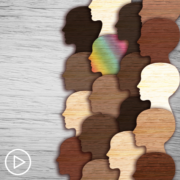Can Race or Ethnicity Impact CAR T-Cell Therapy Response?
Can Race or Ethnicity Impact CAR T-Cell Therapy Response? from Patient Empowerment Network on Vimeo.
Can CAR T-cell therapy response be impacted by patient race or ethnicity? Expert Dr. Sikander Ailawadhi from Mayo Clinic discusses some impacts to CAR T-cell therapy response for African Americans and some clinical methods to help reduce impacts to patients.
[ACT]IVATION TIP
“…there is a lot of work happening, research happening around how to predict and prevent side effects from CAR T so that the patients are much more informed, aware, can make an informed decision, and as clinicians, we can do whatever is within our control and is at our disposal to help prevent those side effects and make CAR T an even safer and more beneficial treatment for patients.”
See More from [ACT]IVATED CAR T
Related Resources:
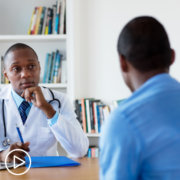
|
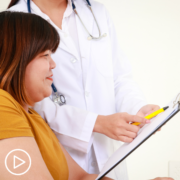
How Can Information Disparities on Emerging Therapies Be Addressed? |

|
Transcript:
Lisa Hatfield:
Dr. Ailawadhi, is there data around ethnicity and response to CAR T-cell therapy and whether genetic factors may affect treatment outcomes? And can the side effects of CAR T-cell therapy be predicted or prevented?
Dr. Sikander Ailawadhi:
So Lisa, a very important question of whether there are racial ethnic factors that can affect CAR T-cell therapy benefit or side effects, and what are we doing to prevent some of these side effects? We know side effects can happen, what can we do to actually prevent them? So I’ll take this question in two different subgroups. The first one of talking about racial ethnic groups or differences. So we know patients who are African Americans. This is one study reported that African Americans are more likely to have side effects from CAR T-cell therapy.
So while it’s not a specific “genetic factor,” but race ethnicity can sometimes be associated with more side effects, and that is just because these are very inflammatory delivered or inflammatory mediated side effects like CRS. It’s also important to know that there are certain other factors, disease or treatment-related factors, that can help predict potentially more side effects with CAR T. For example, patients who are very heavily pre-treated, patients who have a very high disease burden, patients who did not respond to bridging therapy that was given to them prior to the CAR T.
These are all factors where we know that side effects are going to be more, and the success of the treatment might be lesser. What we are trying to do to mitigate some of these side effects, there are now studies which are giving either some low doses of steroids as a prophylaxis before, right around the time of CAR T, so that side effects may not happen. Studies that are giving a low dose or even standard dose of what’s called tocilizumab (Actemra), toci, or tocilizumab.
This toci drug is an antidote for CRS or cytokine release syndrome. The thought is, well, why wait for the toci to be given after the side effect happens? Why not give it beforehand and prevent the CRS? Historically, there was a concern that steroids or toci given early on could affect the CAR T-cell viability or activity, but that’s not the case. For example, in lymphomas, there are clinical trials that have shown very clearly given prophylactic or preventative steroids could help. Using steroids or toci in a preventative manner is helping mitigate some of the side effects.
Well, by preventing the side effects, we are being able to give the treatment in a way that the patients may have lesser side effects and can get it done closer to home or at home sometimes, and their time to stay in the hospital is lesser. You can imagine that some of these barriers are being further mitigated.
My activation tip for this question is that there is a lot of work happening, research happening around how to predict and prevent side effects from CAR T so that the patients are much more informed, aware, can make an informed decision, and as clinicians, we can do whatever is within our control and is at our disposal to help prevent those side effects and make CAR T an even safer and more beneficial treatment for patients.
Share Your Feedback
How Are Rural CAR T-Cell Therapy Barriers Being Addressed?
How Are Rural CAR T-Cell Therapy Barriers Being Addressed? from Patient Empowerment Network on Vimeo.
How are barriers to CAR T-cell therapy care in rural areas being reduced? Expert Dr. Sikander Ailawadhi from Mayo Clinic discusses positive patient care developments from COVID and how patients can help optimize their care.
[ACT]IVATION TIP
“…over these past few years, post-COVID, we have learned how to deliver healthcare in a more patient-centric manner, and we are using those factors, those tools, those techniques, to be able to bring CAR T and its associated care to a lot of many more patients. I still would like patients to seek out care as and when possible.”
See More from [ACT]IVATED CAR T
Related Resources:

|

How Can Information Disparities on Emerging Therapies Be Addressed? |
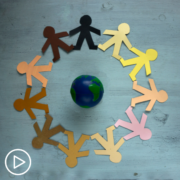
|
Transcript:
Lisa Hatfield:
Dr. Ailawadhi, logistical challenges exist in delivering CAR T-cell therapy to patients, especially in rural or underserved areas. Can you speak to any innovative delivery models that could improve access?
Dr. Sikander Ailawadhi:
This is an extremely important, but also an exciting question to ask, Lisa, whether we have some interesting models or innovative healthcare delivery models that are trying to overcome some of these access barriers to CAR T-cell therapy. So, one thing that COVID has taught us is that medicine does not need to be delivered or healthcare does not need to be delivered in a cookie cutter fashion as we were doing it before. Suddenly, after COVID, I’m glad that we all as a community, as a society, pivoted and started delivering telemedicine care.
So, we are still doing a lot of telemedicine. I’ll give you the example of one case who’s near and dear to me, because she did come through a lot of adversity to get to this point. A relatively younger lady with multiple myeloma, who’s an international patient, and she came from Middle East, she had already received two transplants and had run through all the treatment options available locally.
She had some family members and some means that she could actually come here, so she came to the U.S., did a consult, we did a visit, we took over her treatment, she got CAR T, but then a month or so after that she was doing fine and she wanted to go back home. She was here with some family members living in a foreign country, not speaking the language, et cetera. Her children were very supportive and spoke English. So, she went back and I still continue to do video visits with her just to see how she’s doing, monitor her disease, she sends me records through the electronic medical system portal, I can see her labs, and I think it gives me peace of mind that I’m keeping an eye on it, it gives her peace of mind.
And I don’t think a lot of it would have been possible without the tools that we have at our disposal, now, for example, telemedicine. Now, certain institutions do have other opportunities, like they have mobile clinics, they will actually go to the patients where they are. We, for example, at Mayo Clinic in the Midwest, in Minnesota, we have a health system that is present throughout three different states in the Midwest, where we have smaller clinics where the patients could go to and receive all their care, except for the CAR T portion for which they can come to the main site.
We also have something set up, for example, at Mayo called remote patient monitoring. We have something called acute care at home, in which we are providing a lot of this CAR T-cell therapy as an outpatient. Patients can receive their cells but can be discharged very early. And then a lot of these remote monitoring services we are using to help patients stay where they are, feel safe, not being stuck in a hospital room, and are able to receive their care sometimes in their homes with their caregivers and family members by their side, and they feel more comfortable about it.
So a lot of these things that we are doing to provide access to care to patients, and I would also say, this is helping overcome some healthcare disparities also, because some of those patients who have challenges or barriers to the access, but by doing these innovative things of telemedicine, at home care, remote monitoring care, et cetera, we are suddenly overcoming some of those barriers. For example, the patient needing to go to the hospital, the patient needing to have a caregiver who has to miss time from work just because they have to be at the hospital, et cetera.
So my activation tip for this question is that over these past few years, post-COVID, we have learned how to deliver healthcare in a more patient-centric manner, and we are using those factors, those tools, those techniques, to be able to bring CAR T and its associated care to a lot of many more patients. I still would like patients to seek out care as and when possible.
Share Your Feedback
How Do Race and Ethnicity Impact CAR T Side Effects?
How Do Race and Ethnicity Impact CAR T Side Effects? from Patient Empowerment Network on Vimeo.
How are CAR T side effects impacted by race and ethnicity? Expert Dr. Sikander Ailawadhi from Mayo Clinic shares some research study results about CAR T response rates and disease progression in African American and Hispanic patients and solutions for clinicians.
[ACT]IVATION TIP
“…there are some differences by race, ethnicity, specifically for the side-effect profile, patients should be aware of it, and clinicians who are the CAR T specialists should be aware of it so that they can manage the side effects well in their patients.”
See More from [ACT]IVATED CAR T
Related Resources:

|

How Can Information Disparities on Emerging Therapies Be Addressed? |

|
Transcript:
Lisa Hatfield:
Dr. Ailawadhi, real-world data from one of the available CAR-T-cell therapies, ide-cel (Abecma), has shown some differences in the side effect profile and benefit by patient race and ethnicity. What is your take on this, and how do you utilize this in your clinical practice? And also, what do you think researchers should do next to learn more about how CAR T therapies affect different people?
Dr. Sikander Ailawadhi:
This is an extremely important question, looking at what is the data currently on the risks and benefits of CAR T-cell therapy in patients from different racial ethnic groups, and then how are we using that in the clinic today and where should the field go about research in this area. So, Lisa, you’ve correctly pointed out that this study that was published recently is based on some real world data from one of the CAR T cells available, ide-cel.
Now, I shouldn’t say that this is specifically to ide-cel, but basically, ide-cel has been around a little bit longer than cilta-cel (Carvykti), and so the real-world data on ide-cel was to the point that this racial ethnic analysis could be done, and it was reported. That said, we don’t know how cilta-cel would be. That data just does not exist. So, I’m not saying that this is applicable to cilta-cel or not, because at least this study was specifically for ide-cel because that data was mature enough to be reported. That was just a qualifier of this particular question.
Now, what that study showed was that some of the side effects, including CRS, the cytokine release syndrome, and certain markers that can be an accompaniment of CRS, like the ferritin or what’s called CRP, C-reactive protein, which are inflammatory markers. So, inflammatory markers were higher in African Americans, and the CRS was also higher in African Americans from that real-world data.
The other thing that it showed was that the response rates were lower in Hispanics, but the progression-free survival, meaning time it took for the disease to progress and require more treatment, was lower in African Americans or overall survival was same across the racial ethnic groups. So, side effects a little bit more in African Americans, and the immediate response, a little bit less in Hispanics, but overall outcome, similar across races. Now, this is important for us to know because African Americans tend to have certain inflammatory disorders more frequently, like even asthma is seen more frequently in African Americans.
So, CRS, which is an immune system mediated inflammatory response, I can imagine that some of it might be higher in African Americans. So, in our clinics, what we are doing is when we are monitoring the patients, every patient is getting monitored the same way, but when it’s an African American patient, we are putting a little bit more focus on those inflammatory markers that can sometimes start showing up even before the CRS happens. I don’t think the response rate portion of Hispanics that we’re really taking into account much because the overall outcome or the long-term outcome was not really different between races and ethnicities.
Of course, there needs to be much more research, so I think we need longer-term follow-up data, we need larger number of patient data, and what I alluded to in the very beginning, we do need data on cilta-cel also, which has not yet been presented, but we are hoping that it will come out very soon. So, my activation tip for this question is, that there are some differences by race, ethnicity, specifically for the side-effect profile, patients should be aware of it, and clinicians who are the CAR T specialists should be aware of it so that they can manage the side effects well in their patients.
Share Your Feedback
How Can Information Disparities on Emerging Therapies Be Addressed?
How Can Information Disparities on Emerging Therapies Be Addressed? from Patient Empowerment Network on Vimeo.
How can gaps in information about emerging myeloma therapies be reduced? Expert Dr. Sikander Ailawadhi from Mayo Clinic discusses some demographic characteristics of information disparities and advice for myeloma experts and patient advocates to help bridge information gaps.
[ACT]IVATION TIP
“…I would highly encourage all my fellow clinicians, educators, researchers, and myeloma academicians to please consider developing some of these thresholds in your clinics so that if a patient is even able to come through the door and sees you, they are able to gain access to resources, or you’re able to bring together higher amount of resources specifically for that patient’s needs.”
See More from [ACT]IVATED CAR T
Related Resources:

|
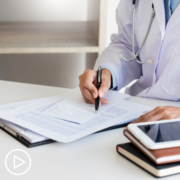
|

|
Transcript:
Lisa Hatfield:
Recent studies have identified demographic characteristics such as higher education, residency in certain regions, and urban or suburban living as factors influencing awareness and understanding of novel myeloma treatments. How can healthcare organizations tailor educational initiatives to reach underserved populations and address these disparities in access to information and understanding of emerging therapies?
Dr. Sikander Ailawadhi:
Lisa, this is a very interesting and important question. And as you were pointing out, studies that are talking about education level residency in certain geographical regions or urban/suburban areas, and that may be affecting the patient’s understanding and awareness of novel myeloma treatments. I kind of smile a little bit because one of those studies is ours that we conducted in about close to 2,300, 2,400 patients where we surveyed patients about CAR T-cell therapy and bispecific antibodies.
And what we found out is that there were a lot of differences. Patients with higher education where their information was closer to the correct information. I mean, there are sometimes gaps everywhere, but the patients with lower education in certain parts of the country or who identify as being from a rural area, they tend to have many more gaps and misconceptions about treatments.
So, while it was a novel finding, I wasn’t really surprised in seeing that. Because historically, our patients who are in rural areas, who are lower income or lower education strata, they tend to be underserved and underrepresented and just underserved. So what we’re trying our best to do is when we create the education initiatives, we are trying to, one, disseminate it across the board. So for example, studies like this, study gives results. We are working on writing the manuscript and publishing it so that anybody and everybody can read that and find out and say, “Oh, you know what, this is something that the people over at Mayo Clinic in their study found. Most likely it is applicable to us also.
So either we should look for that finding, or we should just try to mitigate it. We should just work on it.” So developing the education material and spreading it far and wide, we are strongly considering also that the results of these studies should be shared with our patients. Why not? I mean, forums like this or even for that matter, our other support group programs and other education initiatives, we are trying to disseminate these study results with the patients because they need to know about it.
And then when we are…as you rightly asked, how are we tailoring these education initiatives? I think the idea is we are trying to disseminate it far and wide. We are also trying to share it with institutions that may have a larger catchment population of these underserved groups. And then when we are putting together these initiatives, these education initiatives…or I should say, from a different standpoint, when patients come to our institution, we have certain triggers that we have set up.
So if somebody is African American or Hispanic, or if somebody in the EMR, in the electronic medical record system, has identified themselves coming from a rural area background, or if somebody has what’s called certain social determinants of health that are captured by the electronic medical record, and if they have some flags there, I think my threshold of getting a social work consult for that person or providing extra education material, that threshold goes down. We have that set up in our clinics.
So certain characteristics will qualify the patient to be able to access more information just because we feel that that is the group that tends to be traditionally underserved. So my activation tip for this question is, while we will try our best to provide information as far and wide as possible, I would highly encourage all my fellow clinicians, educators, researchers, and myeloma academicians to please consider developing some of these thresholds in your clinics so that if a patient is even able to come through the door and sees you, they are able to gain access to resources, or you’re able to bring together higher amount of resources specifically for that patient’s needs.
Share Your Feedback
How Can Equitable CAR T-Cell Therapy Access Be Increased?
How Can Equitable CAR T-Cell Therapy Access Be Increased? from Patient Empowerment Network on Vimeo.
How can CAR T-cell therapy access issues be reduced? Expert Dr. Sikander Ailawadhi from Mayo Clinic explains some common access issues that can arise for patient CAR T care and some ways that providers and patient advocates are raising awareness about support resources.
[ACT]IVATION TIP
“…from a patient’s standpoint and role, while institutions are trying their best to provide the care wherever they can, from a patient standpoint, understanding what might be the specific barriers in their case to get to CAR T and trying to get to an institution that has the resources to help overcome and mitigate some of those barriers would be very important.”
See More from [ACT]IVATED CAR T
Related Resources:

How Can Information Disparities on Emerging Therapies Be Addressed? |

|

|
Transcript:
Lisa Hatfield:
How can healthcare systems ensure equitable access to CAR T-cell therapy for all eligible patients, regardless of demographic or economic factors?
Dr. Sikander Ailawadhi:
Lisa, it’s an important question of how do healthcare systems, what role they can play in providing equitable access to CAR T-cell therapy or care in general. And I think it’s also important to figure out what is the patient’s role in this, in addition to the healthcare system’s role. So, there are some institution-specific things, I don’t want to say issues or problems or whatever concerns, but things that sometimes can be barriers or sometimes are non-modifiable. For example, the type of insurances that are accepted or sometimes, for cell therapy, insurance companies actually have preferred centers they want patients to go to. That happens for stem cell transplant, that also happens for CAR T.
And a lot of that happens based on how the contracts are kind of designed or contracts are negotiated between an institution and an insurance company, et cetera, et cetera. I’ll be very frank, a lot of those details are way beyond my pay grade, so I won’t be able to go into the specifics of that. But what I can say is, a patient may not be able to…based on certain barriers, certain criteria, a patient may not be able to access CAR T-cell therapy at certain centers.
For example, let’s say there’s a patient in the Jackson metro area where I am, and they would like to come to Mayo Clinic, but their insurance and Mayo Clinic are not compatible. The patient may not be able to come for cell therapy, but yeah, that patient may be able to at least seek a consult. And through that consult, we’ll be able to then either connect the patient with a different center or give them details about, “hey, you know what, why don’t you consider going to X, Y, or Z and get the treatment over there?” I’ll be very frank, unlike the general thoughts around, well, everybody wants the patient to only come to them, I think those of us who are clinicians, academicians, educators, researchers, we want the right answer for every single patient. Whether that patient comes to me, one of my colleagues in a different institutions, one of my “competitors” in a different institution, it doesn’t matter, as long as the right treatment is coming to the patient.
So I think if a patient is not able to get to a treatment like CAR T, they need to understand, “What is the reason? Why am I not being able to get into it? Is there a barrier for distance, resources, insurance, education, just caregiver support? Why is it that I’m not getting it?” There should be enough buzz around CAR T that everybody should say, “Well, am I a candidate? If not, why not?” And once we find out what is the problem, that can be addressed. We are working quite hard in trying to get some of those accesses around the patients and different groups of patients, making them more equitable.
So for example, we do provide every CAR T-cell therapy patient with a social work consult. That social worker’s job is to figure out what are these barriers for that patient. But I understand that’s for the patients who have already come through the door to seeing us. But if a patient is not able to come to us because of some reason, as an institution, we are also making some efforts in trying to get more awareness and education to patients who are not coming to us, but are say, going to other institutions.
We are setting up webinars, going to patient support groups, talking, doing programs like this so that the information can be disseminated far and wide and anybody and everybody can benefit from it. So my activation tip for this question is, that from a patient’s standpoint and role, while institutions are trying their best to provide the care wherever they can, from a patient standpoint, understanding what might be the specific barriers in their case to get to CAR T and trying to get to an institution that has the resources to help overcome and mitigate some of those barriers would be very important.
Lisa Hatfield:
Thank you. That is why patients appreciate you because you’re willing to do what it takes to take care of your patients, even if it means sending them somewhere else. That is a characteristic of an excellent physician.
Share Your Feedback
How Are Cultural and Language Barriers to CAR T Therapy Being Addressed?
How Are Cultural and Language Barriers to CAR T Therapy Being Addressed? from Patient Empowerment Network on Vimeo.
How are CAR T therapy barriers of cultural and language nature being addressed? Expert Dr. Sikander Ailawadhi from Mayo Clinic discusses research study results on access barriers and ways to create solutions that address language and cultural issues.
[ACT]IVATION TIP
“…having a culturally sensitive discussion and a system that approaches the patients for complex treatments like CAR T or clinical trials. And personally, I’ve seen that it makes a big difference to the patient’s consideration of those treatment options.”
See More from [ACT]IVATED CAR T
Related Resources:

How Can CAR T-Cell Therapy Be Explained to Patients and Families? |
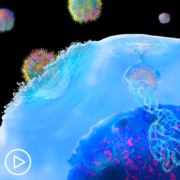
Reducing CAR T-Cell Therapy Barriers for Relapsed/Refractory Myeloma |
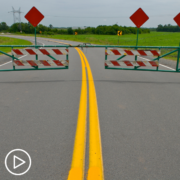
Roadblocks for Black and Latinx Patients From CAR T Trial Access |
Transcript:
Lisa Hatfield:
Dr. Ailawadhi, we know cultural or language barriers may hinder access to information about CAR T-cell therapy. How are you and your colleagues addressing this barrier?
Dr. Sikander Ailawadhi:
It’s very important to think about cultural or language barriers and how they may affect our way we deliver the care and the way the patients consume that healthcare. A few years ago we had done a study looking at just electronic medical record usage and how patients participate in their EMRs, for example. And we realized that for patients who are non-white, language barrier was a big issue because frankly, majority of our EMRs are English. They don’t provide a lot of Spanish or other language support.
Similarly, clinical trials and education material for CAR T, et cetera, they are very frequently in English. There is an increasing number of Spanish documents that are becoming available. So how we try to overcome these barriers, I think we have started, utilizing an approach in our institution where our research staff, we are trying to hire a diverse population.
There is data that based on studies, it has been very clearly shown before that, a patient is more likely to consider favorably a clinical trial or a treatment if it is being offered by someone who look and speak like them. So an African American patient is more likely to accept or consider a treatment, I would say, not even accept, but consider a treatment if it is being offered by an African American physician, an African American clinical research coordinator, et cetera.
While I’m not African American, I can’t change that, but we have African American, Hispanic, Asian clinical research coordinators in our teams, and we have noticed a clear difference in the patient’s understanding their ability to ask questions, their willingness to ask questions and clear out their barriers if it is given to them in a culturally sensitive, culturally appropriate manner. So my activation tip for this question would be, having a culturally sensitive discussion and a system that approaches the patients for complex treatments like CAR T or clinical trials. And personally, I’ve seen that it makes a big difference to the patient’s consideration of those treatment options.
Share Your Feedback
Roadblocks for Black and Latinx Patients From CAR T Trial Access
Roadblocks for Black and Latinx Patients From CAR T Trial Access from Patient Empowerment Network on Vimeo.
What are CAR T-cell therapy roadblocks for Black and Latinx trial access? Expert Dr. Sikander Ailawadhi from Mayo Clinic discusses barriers that have been documented in clinical research and solutions and patient advice for overcoming barriers.
[ACT]IVATION TIP
“…please seek out a specialist center that specializes not only in myeloma, but also in CAR T and in clinical trials, and even at that center, seek out the physician who has part an experience of participating in clinical trials.”
See More from [ACT]IVATED CAR T
Related Resources:
Transcript:
Lisa Hatfield:
Dr. Ailawadhi, there is so much promise around CAR T-cell therapy, but barriers exist. Can you speak to the roadblocks that prevent Black and Latinx patients from participating in CAR T-cell therapy trials that you have witnessed?
Dr. Sikander Ailawadhi:
Lisa, this question about healthcare disparities and access to care, especially based on patient race ethnicity, it’s very near and dear to my heart. I do a lot of work around this and also a lot of research. Not just for CAR T, data has been very clear over years and decades that in multiple myeloma and frankly, in all cancers also. Clinical trial access is dismal when it comes to African Americans and Hispanic patients. Unfortunately, a lot of that data does not even exist about Hispanic patients.
But the publications are very clear with, so we’ve had one publication of ours, and then there has been one other from national data where FDA-approved drugs clinical trials were evaluated. And it was noted that while African American patients make up about 20 percent of the U.S. myeloma population, less than 5 percent of them participated in clinical trials that led to FDA approval of myeloma drugs.
‘m not saying that is specific for CAR T. In recent years when the CAR T trials were happening, the numbers have improved a little bit. They’re still not the same numbers representing myeloma population in the US, but some improvements happened, for sure. The barriers to getting onto CAR T and clinical trials related to such resource and time intensive treatments are multifactorial.
A lot of times they are sociodemographic, patients need to take time away from work. They have to have a caregiver, they have to have appropriate insurance approvals for certain things. They have to be able to go to a center that may be close to them. These centers are hopefully going to be able to bring some other resources like social workers, navigators, et cetera, to help that patient get onto the trial. And then there is sometimes lack of awareness of CAR T, lack of awareness of clinical trials per se, clinical, and there are fears, anxiety, scares around getting on clinical research.
Lots of barriers, I think we can systematically take care of mitigating them. I would again say, just as I mentioned previously in a different context, one simple way of trying to overcome barriers or at least making attempts to overcome barriers, is to get to a center that specializes in CAR T, that specializes in clinical trials and speak with an expert, a physician who has a clinical trial track record.
Patients can research all of this, and if that falls in place, I’m sure some of these access barriers and some of these disparities can be overcome. My activation tip for this question is, please seek out a specialist center that specializes not only in myeloma, but also in CAR T and in clinical trials, and even at that center, seek out the physician who has part an experience of participating in clinical trials.
Share Your Feedback
Reducing CAR T-Cell Therapy Barriers for Relapsed/Refractory Myeloma
Reducing CAR T-Cell Therapy Barriers for Relapsed/Refractory Myeloma from Patient Empowerment Network on Vimeo.
How can CAR T-cell therapy barriers for relapsed/refractory myeloma be reduced? Expert Dr. Sikander Ailawadhi from Mayo Clinic shares his perspective about barriers to CAR T and advice for patients to reduce access issues.
[ACT]IVATION TIP
“…the number one way of mitigating any healthcare access issues or the fears and scares about CAR T is, speak with a CAR T designated expert at a center that gives CAR T-cell therapy, and then only make a decision whether you want CAR T therapy for yourself or your care, your loved one or not.”
See More from [ACT]IVATED CAR T
Related Resources:
Transcript:
Lisa Hatfield:
Dr. Ailawadhi, what are the most significant challenges or barriers that patients with relapsed/refractory myeloma face when considering CAR T-cell therapy as a treatment option? And how can these challenges be addressed to improve patient outcomes and access to care?
Dr. Sikander Ailawadhi:
Lisa, it’s very important for us to remember that while we talk about CAR T or advancements in myeloma, your question of what are the most significant challenges and barriers for patients with relapsed/refractory myeloma, and especially when they’re considering CAR T, and how do we try to overcome these challenges? This is a very important question. CAR T-cell therapy is very resource and a time-intensive treatment. Patients may not have a CAR T center close to them. They may have to go closer to a center, live there for about a month or so, or sometimes even more.
During this time, the treatment has to be controlled. There are approvals from insurance, there are tests required, in between treatment to control the disease, and then sometimes staying in the hospital, sometimes…and, of course, need for a caregiver, that is such an important requirement. Of course, the promise of treatment is that at the end of it, the patients may come out and maybe, with significant disease control.
But to get to that promised land, we have to walk through this…as I said, a time intensive and a resource intensive situation. Now, all of this is very daunting, is very anxiety provoking, is very scary, in fact. To me, the biggest way of overcoming these challenges, improving access to care, et cetera, is, let that patient see a qualified CAR T-cell center.
And importantly, a physician who gives CAR T-cell therapy, that one consult or one visit can take care of so many fears, anxiety, scares, et cetera, because frankly, all of our centers, all of us who focus on CAR T-cell therapy, we have a whole slew of resources at our disposal which we can bring together for the patients and their caregivers, whether it’s navigators, revenue or finance analysts, social workers, clinical psychologists, these are all a part and parcel of our CAR T-cell journey for a patient.
But frankly, I cannot bring those resources to a patient when they’re not even established with us, or they don’t even set foot through our doors. My activation tip for this question is the number one way of mitigating any healthcare access issues or the fears and scares about CAR T is, speak with a CAR T designated expert at a center that gives CAR T-cell therapy, and then only make a decision whether you want CAR T therapy for yourself or your care, your loved one or not.
Lisa Hatfield:
One quick question. Are you still seeing the bottlenecks for CAR-T therapy since it’s been FDA-approved? You have patients who want it but cannot access it because there’s a bottleneck with a process. Is that a barrier?
Dr. Sikander Ailawadhi:
It’s a good question. So in recent months, we have noticed that the initial bottleneck with availability of slots and numbers for CAR T, those bottlenecks are easing up quite a bit. With both the CAR T manufacturers in the U,S., there is hardly any wait list issue. And if patients are going to centers that are saying that, there’s too long of a wait list, we can’t get you to it, they should go to another center.
Share Your Feedback
How Can CAR T-Cell Therapy Be Explained to Patients and Families?
How Can CAR T-Cell Therapy Be Explained to Patients and Families? from Patient Empowerment Network on Vimeo.
How can patients and families be educated about CAR T-cell therapy? Expert Dr. Sikander Ailawadhi from Mayo Clinic discusses the approach he takes to explaining the treatment to those new to learning about CAR T.
See More from [ACT]IVATED CAR T
Related Resources:
Transcript:
Lisa Hatfield:
Dr. Ailawadhi, how do you explain CAR T therapy to your patients and families hearing about it for the first time?
Dr. Sikander Ailawadhi:
Lisa, that’s a very important question of how we explain CAR T to a patient, or their family members, of course, their caregivers. If we just take a step back and think about it, this is the most closed way are to science fiction in treating multiple myeloma. And so obviously, explaining that in terms that makes sense to them, gets them excited, but also gives them, one, the promise of the treatment and two, the appropriate details of potential side effects, et cetera, so that the patient can take an informed decision.
That boils down to the principle of shared decision making that all of us keep vying for. So the way I explain is that CAR T-cell therapy is based on the fact of taking a patient’s immune system, training it to go against that particular cancer and giving that hyper-activated or that activated trained immune system back to the patient.
And what we typically…the way I would explain that is that, some of these patients have had stem cell transplants before. It’s also important for me to keep comparing and contrasting with that. We explain to the patients that they typically undergo some testing to identify whether they’re candidates for CAR T or not, based on organ function, et cetera. Then we collect the T cells from their bloodstream. But as against stem cell transplant where the collection could have taken three to five days, T-cell collection is done only in one day in one sitting, outpatient.
And then those T cells are sent for manufacturing. During that time, the patient, we work on controlling their disease, and then those T cells are genetically modified. Some DNA for a target that is present on the myeloma cells, that is inserted into the T cells’ DNA.
The genetic material of a seeker is put into the T cells. Then those T cells are multiplied in the lab, and are sent back to us a few weeks later from the collection as a bag as the drug. And this has given back to the patients. Now, those trained activated T cells, have that seeker that they can specifically go and target a particular marker on the myeloma cells. In the case of both the CAR T cells that are currently FDA-approved, that, target on the myeloma cells is called BCMA. B-cell maturation antigen. So while the myeloma had that BCMA, the myeloma was growing because our immune system was not able to control it.
Now, the new…these activated T cells that came back or trained T cells, they have a seeker that can specifically go seek out the BCMA attached to it and kill those myeloma cells. And by the way, this BCMA is almost universally present on the myeloma cells. If I have to keep in mind an activation tip for this question of how do I explain CAR T-cell therapy is we take your immune system, as in the patient’s immune system, that immune system is trained to specifically go against the myeloma and is given back to the patients so that now those T cells are able to go and kill the myeloma, which was growing uncontrolled previously.

